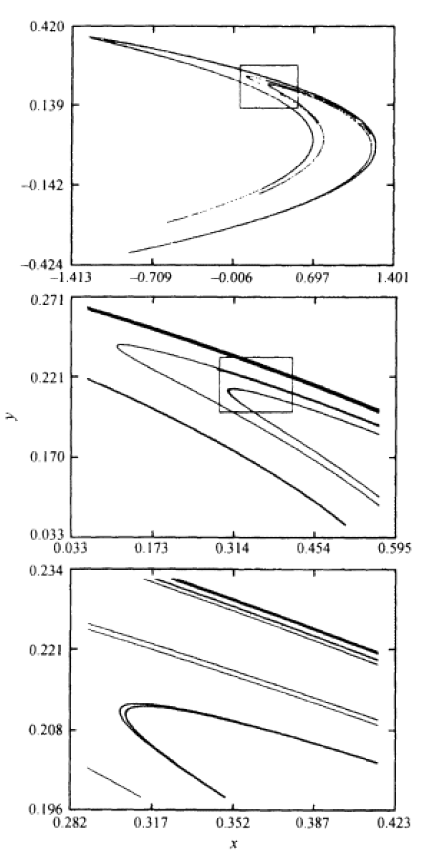
تاريخ الفيزياء

علماء الفيزياء


الفيزياء الكلاسيكية

الميكانيك

الديناميكا الحرارية


الكهربائية والمغناطيسية

الكهربائية

المغناطيسية

الكهرومغناطيسية


علم البصريات

تاريخ علم البصريات

الضوء

مواضيع عامة في علم البصريات

الصوت


الفيزياء الحديثة


النظرية النسبية

النظرية النسبية الخاصة

النظرية النسبية العامة

مواضيع عامة في النظرية النسبية

ميكانيكا الكم

الفيزياء الذرية

الفيزياء الجزيئية


الفيزياء النووية

مواضيع عامة في الفيزياء النووية

النشاط الاشعاعي


فيزياء الحالة الصلبة

الموصلات

أشباه الموصلات

العوازل

مواضيع عامة في الفيزياء الصلبة

فيزياء الجوامد


الليزر

أنواع الليزر

بعض تطبيقات الليزر

مواضيع عامة في الليزر


علم الفلك

تاريخ وعلماء علم الفلك

الثقوب السوداء


المجموعة الشمسية

الشمس

كوكب عطارد

كوكب الزهرة

كوكب الأرض

كوكب المريخ

كوكب المشتري

كوكب زحل

كوكب أورانوس

كوكب نبتون

كوكب بلوتو

القمر

كواكب ومواضيع اخرى

مواضيع عامة في علم الفلك

النجوم

البلازما

الألكترونيات

خواص المادة


الطاقة البديلة

الطاقة الشمسية

مواضيع عامة في الطاقة البديلة

المد والجزر

فيزياء الجسيمات


الفيزياء والعلوم الأخرى

الفيزياء الكيميائية

الفيزياء الرياضية

الفيزياء الحيوية

الفيزياء العامة


مواضيع عامة في الفيزياء

تجارب فيزيائية

مصطلحات وتعاريف فيزيائية

وحدات القياس الفيزيائية

طرائف الفيزياء

مواضيع اخرى
Fractals and Chaos
المؤلف:
Garnett P. Williams
المصدر:
Chaos Theory Tamed
الجزء والصفحة:
198
14-3-2021
3461
Fractals and Chaos
Fractals deal with geometric patterns and quantitative ways of characterizing those patterns. Chaos, in contrast, deals with time evolution and its underlying or distinguishing characteristics. Fractals are a class of geometric forms; chaos is a class of dynamical behavior.
Fractals and chaos are closely intertwined and often occur together. For instance, most chaotic attractors have a fractal striated texture. Points on such attractors plot as a set of layers that look the same over a wide range of scales. The layered structure can be difficult to see because of noise and the small number of points in some datasets. The points then seem to plot on a single curve. Figure 1 is a chaotic attractor on which the same amount of detail appears as we repeatedly zoom in on smaller and smaller sections (and enlarge and refocus them for appropriate viewing). In general, "the chaotic attractors of flows or invertible maps typically are fractals; the chaotic attractors of noninvertible maps may or may not be fractals. The chaotic attractors of the logistic equation, for example, are not fractals" (Eubank & Farmer 1990). Other chaos-related geometric objects, such as the boundary between periodic and chaotic motions in phase space, also may have fractal properties (Moon 1992: 325). Because of those close relationships, fractals can help detect chaos.

Figure 1: Three different magnifications of part of the Hénon attractor. Entire middle diagram shows area outlined by the rectangle within upper diagram; entire lower diagram is region outlined by the rectangle within middle diagram. Computergenerated graphics by Sebastian Kuzminsky.
 الاكثر قراءة في الميكانيك
الاكثر قراءة في الميكانيك
 اخر الاخبار
اخر الاخبار
اخبار العتبة العباسية المقدسة

الآخبار الصحية















 قسم الشؤون الفكرية يصدر كتاباً يوثق تاريخ السدانة في العتبة العباسية المقدسة
قسم الشؤون الفكرية يصدر كتاباً يوثق تاريخ السدانة في العتبة العباسية المقدسة "المهمة".. إصدار قصصي يوثّق القصص الفائزة في مسابقة فتوى الدفاع المقدسة للقصة القصيرة
"المهمة".. إصدار قصصي يوثّق القصص الفائزة في مسابقة فتوى الدفاع المقدسة للقصة القصيرة (نوافذ).. إصدار أدبي يوثق القصص الفائزة في مسابقة الإمام العسكري (عليه السلام)
(نوافذ).. إصدار أدبي يوثق القصص الفائزة في مسابقة الإمام العسكري (عليه السلام)


















